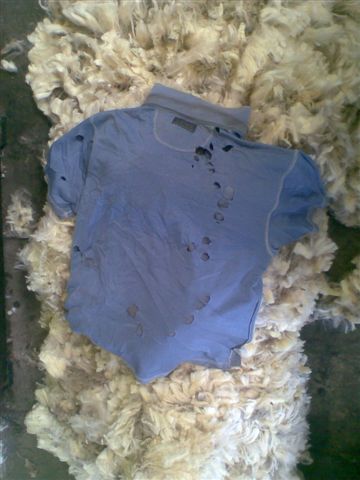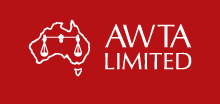
Screening for Contamination in Wool
- Wednesday, 13 February 2013
On average, the AWTA Ltd laboratory staff find contamination or non-wool material in the samples of four lots each and every week. After further investigation, usually involving the inspection of the wool by emptying the bales, about half of these lots are confirmed to contain contamination.
 |
| A shirt located in a bale of fleece wool. Note the holes where the core tube has penetrated. |
When contamination material has been identified in a sample, the selling broker is advised and an image of the contamination is emailed to the broker as an aid to those searching through the bales. Usually the bales in the offending lot are emptied out one by one and the contents are laboriously combed through by hand. This can often take several hours and has to be done under AWTA supervision to ensure that no wool is removed during the process since this would affect the certified test results and bale weights.
When contamination is found, the offending article is removed and forwarded to AWEX, along with the details of the offending bale. This allows AWEX to take appropriate action against the owner of the bales and the Wool Classer. Although the AWTA contamination screening process is a free service provided to the industry, an invoice is issued by AWTA for the cost of supervising the search of the bales if contamination is found. There is no charge if contamination is not found.
Typical contamination articles include clothing articles such as shirts or hats, paper and other rubbish, stencils, lamb-bats, rope, shearing paraphernalia, towels and even dog-leads. It should be noted that this screening process is not a fail-safe; it relies on the contamination material being penetrated by a core tube during sampling and then for it to be included in the sub-sampled portion allocated for VM testing.
 |
| Unfortunately not all contamination is located. This twisted bale hook caused considerable damage to wool processing equipment at a large mill in China. |
